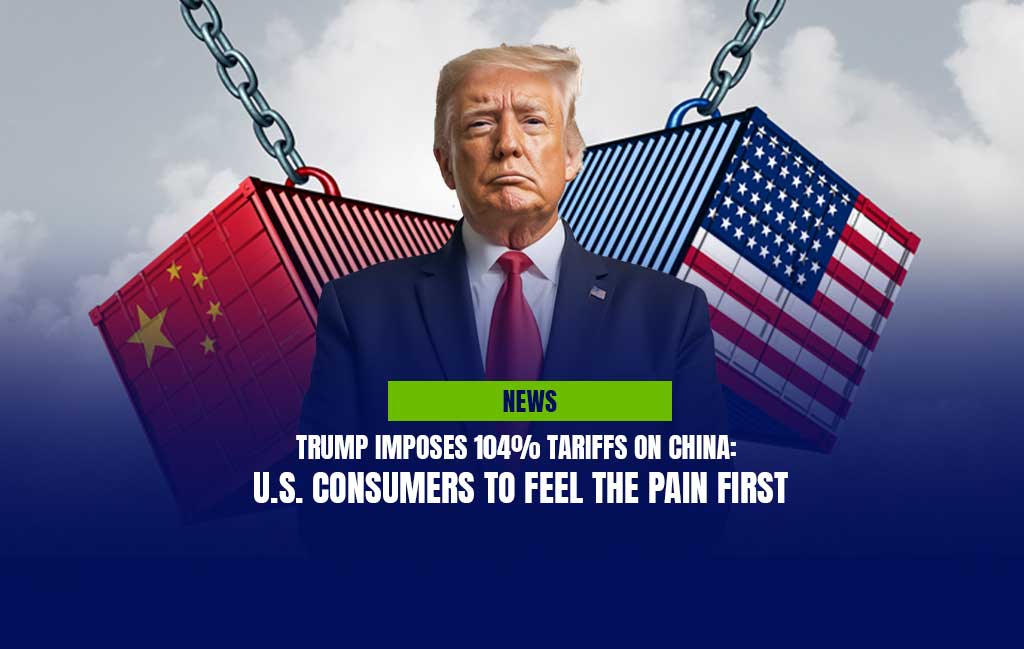“Brace for Impact: Trump Slaps 104% Tariffs on China, Americans Face Skyrocketing Prices”
By [Your Name]
In a dramatic move that could hit Americans right in the wallet, President Donald Trump has reignited a full-scale trade war with China — imposing a staggering 104% tariff on Chinese imports. This marks the most aggressive trade policy escalation of his presidency and sets the stage for a high-risk economic showdown between the world’s two biggest economies.
China isn’t backing down. Within hours, Beijing hit back with 84% retaliatory tariffs on U.S. goods, signaling it’s ready for a prolonged battle.
A Trade War Decades in the Making
The clash is the result of years of rising tension. The U.S. has long accused China of unfair trade practices — from intellectual property theft to currency manipulation and restricted access for American companies. Despite decades of efforts to integrate China into the global economic system — from Nixon’s historic 1972 visit to China’s entry into the WTO in 2001 — Washington’s original goals of reform and cooperation have largely failed.
Trump, who rose to power on a wave of economic nationalism, has made China a central target. He argues that globalization sent U.S. jobs overseas and left many American towns behind — and now he’s determined to reverse that trend.
Tariffs That Hit Americans First
The new tariffs will dramatically raise the cost of products Americans use every day — smartphones, computers, toys, and household goods — many of which are overwhelmingly sourced from China. The result? Prices are expected to soar, and small businesses could be crushed by rising import costs.
According to U.S. trade data, China has consistently been the top supplier of foreign goods to the U.S., responsible for up to 16% of all imports. With Trump’s latest move — combined with previous tariffs — the effective average tariff on Chinese goods now hits 125%.
China Hits Back — and It’s Just Getting Started
Beijing’s response is swift and strategic. It’s not only slapping retaliatory tariffs on U.S. goods but also hinting at cutting off rare earth exports — minerals critical to American tech manufacturing. China may also restrict U.S. businesses operating within its borders and target key American exports like soybeans, hitting America’s farm belt hard.
“President Trump has a spine of steel,” said White House Press Secretary Karoline Leavitt. “He will not break — and America will not break under his leadership.” But experts say China is playing the long game — and it has no upcoming election pressures to worry about.
No Clear Plan, Rising Economic Risks
Trump insists he has only one shot to rebalance the U.S.-China trade dynamic. “We have one shot at this,” he said Monday. But critics argue the approach is reactionary and directionless, with little concern for long-term strategy or fallout.
“There’s going to be pain,” warned Alex Jacquez, former economic adviser to the Biden administration. “We’re looking at a drag on GDP, pressure on the labor market, and inflation that could spiral.”
Even Trump’s allies have stoked tensions. Vice President JD Vance recently mocked China’s economic rise, comments that Beijing slammed as “ignorant” and “disrespectful” — further fueling a diplomatic firestorm.
The Bottom Line: American Consumers Will Pay First
With inflation still looming and supply chains already fragile, the real cost of this economic confrontation may soon be felt at checkout lines and balance sheets across the U.S.
The question now: How much pain can Americans endure before Washington or Beijing blinks?


